NFTs explained: Everything your business needs to know

NFTs are the latest blockchain-based phenomenon. Non-fungible tokens burst into the mainstream in 2021, with NFTs selling for millions of dollars and everyone from Tom Brady to Jay-Z to Visa getting involved in the NFT market. But what are NFTs? Why are they so valuable? And how can your business use NFTs to drive sales and boost brand engagement?
What are NFTs?
NFTs, or non-fungible tokens, are unique digital assets. It’s easiest to think of them as a sort of digital certificate of authenticity.
For years, certificates of authenticity have accompanied the purchase of luxury goods, collectibles, and artworks. Much like the deed to a house, these certificates act as proof of authenticity and ownership over assets.
You can’t just show up at an art gallery with the Mona Lisa and say you want to sell it. You need to prove it's the real deal and show you somehow legitimately acquired it from the Louvre. Systems of proof of purchase, record of ownership, and demonstrable authenticity are what give value to original artworks, first edition novels, and collectibles of all kinds.
NFTs bring proof of authenticity into the digital realm, making ownership of digital assets provable, secure, and part of the public record. This creates opportunities for businesses across industries, giving new value to everything from digital apparel to artworks to branded collectibles.
That's the simple version, but there's much more to NFTs than just that. Read on to learn:
What does fungible mean?
Fungible means a good or commodity’s individual units are interchangeable and indistinguishable.
The best example of a fungible good is money. If you and I both have five-dollar bills, we should have no problem swapping these bills, as they are fundamentally the same—they're fungible.
So, if fungible means interchangeable and indistinguishable, non-fungible means unique and irreplaceable. It turns out most real-world things are non-fungible. Houses, artworks, cars, baseball cards—they are all unique. They are all non-fungible.
In the time before NFTs, most digital artifacts were fungible. If you downloaded a funny GIF and posted it onto your Slack channel, you and all your colleagues get access to the same file that the creator of the GIF has. The GIF is fungible. You can swap it and pass it around and the GIF can proliferate ad infinitum.
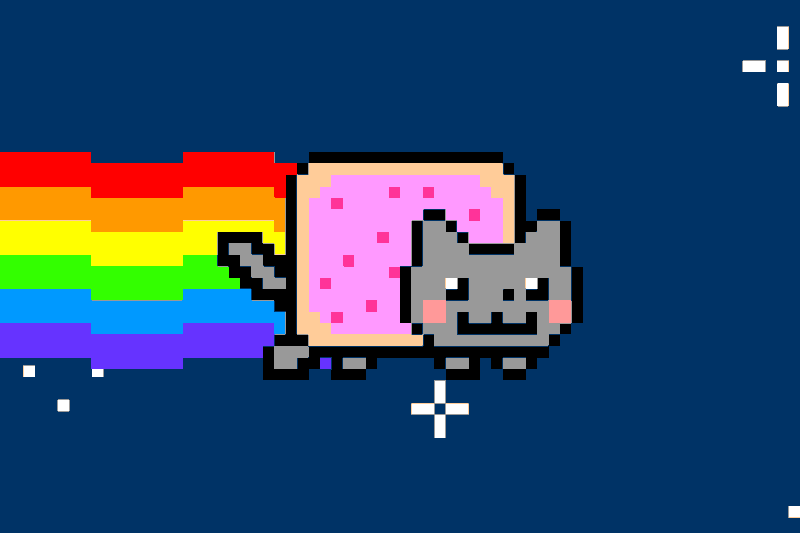
The Nyan Cat GIF was sold as an NFT for 300 ETH
What NFTs do is make it possible to turn that fungible token (in this case, a GIF) into a non-fungible one. And what that does is make the funny GIF you’ve been sending around very valuable.
Yes, the Nyan Cat GIF above sold as an NFT 10 years after its creation for almost $600,000 USD.
RELATED: 39 NFT Ideas & Examples: The Wild, the Weird & the Wonderful
How to use NFTs for your business
NFTs bring exclusive products into the digital realm, creating new ways to engage customers and fans. Major brands from Adidas to Warner Music to Gucci are creating new revenue streams and building brand communities using NFTs.
There are many ways businesses can use NFTs:
- Release limited-supply NFTs as branded collectibles.
- Partner with large NFT brands to tap into their loyal audiences.
- Generate brand communities using NFTs as the ticket to membership.
- Use NFTs to power unique digital experiences for customers.
- Create NFTs that work as branded apparel and accessories in video games.
How your business should use NFTs depends on your brand image, the industry, your customer base, and many more factors. NFTs can be a marketing tool, a way to reward loyal customers, or an extension of your core product offering.
What NFTs mean for businesses is that products don't need to be limited to physical goods. There's a growing market for digital apparel, collectibles, avatars, even profile pictures. For businesses, NFTs are the ticket into this market.
Jimmy Mouton, VP of Marketing at the highly successful NFT marketplace Nifty's calls NFTs "a tool for community building." Watch below to find out what this means for businesses.
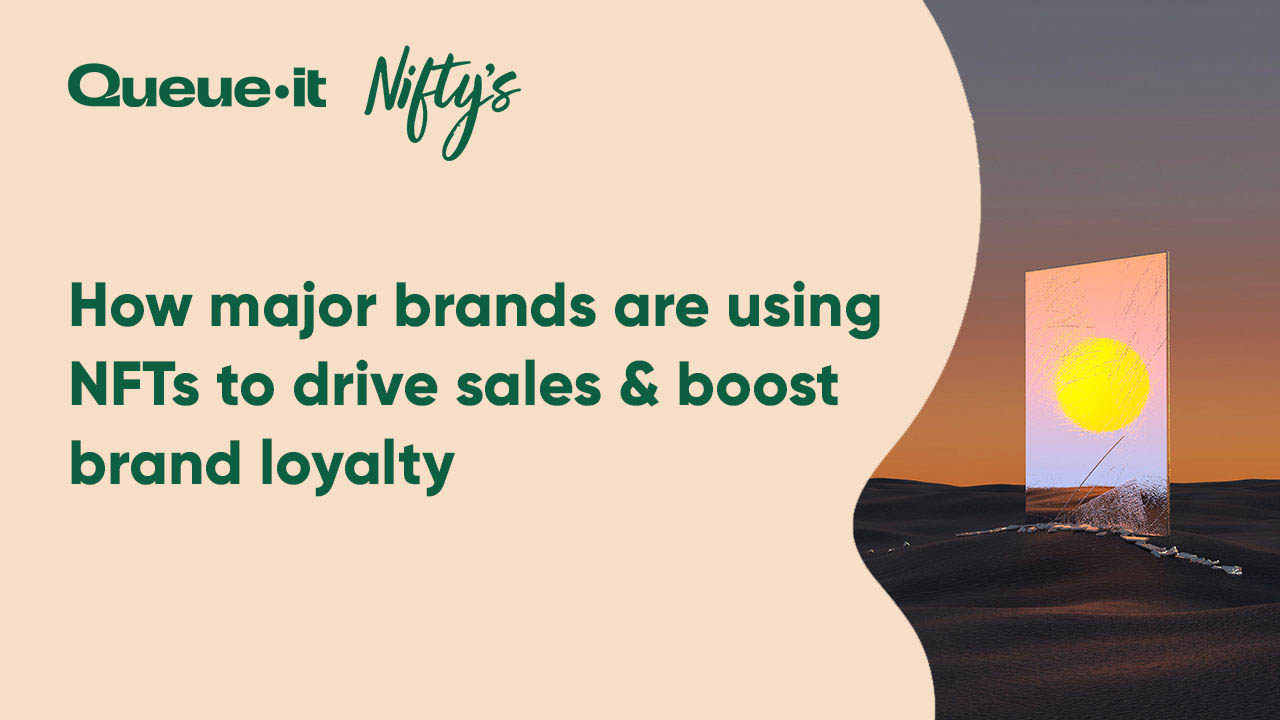
RELATED: [Webinar] How Major Brands are Using NFTs to Drive Sales & Boost Brand Loyalty
Why are NFTs valuable?
NFTs are valuable because ownership of anything that people want is, by nature, valuable. And people want NFTs. They want to own pieces of art and items of cultural significance. They want to own things they think will appreciate in value.
Let's look at an example.
The blue-faced masked man you see below is made up of 24 x 24 pixels and was sold as an NFT for almost $12 million USD. It was auctioned off by Sotheby’s, one of the largest fine art brokerages in the world.
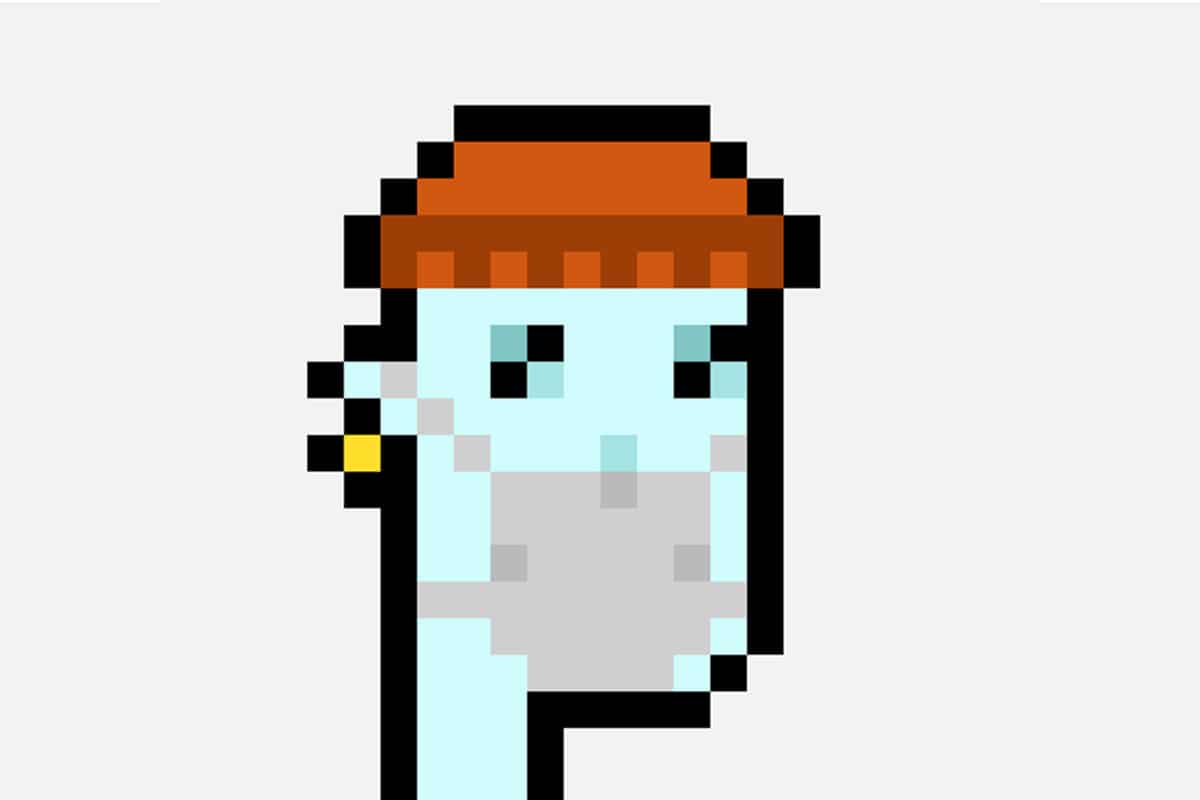
The name of the piece is CryptoPunk 7523, and along with 9,999 other uniquely generated avatars, it’s among the first NFTs ever created. In 2017, New York-based Larva Labs created the CryptoPunks NFT series and gave them away free to any interested party with an Ethereum wallet.
Ethereum is the most popular blockchain on which NFTs are created, bought, and sold.
Algorithmically generated, distinctively digital, and given away for free, CryptoPunks have become the face(s) of the NFT phenomenon. But how does that make them valuable? And why does owning one even matter, since you can right click and save the image for free?
Let’s return to the Mona Lisa: you and I have access to images of Da Vinci’s Mona Lisa. Better still, we can walk into the Louvre and see the masterpiece. But none of the online images are the original.
We cannot claim ownership of an artwork merely by looking at it.
We cannot print off and sell the Mona Lisa.
We cannot paint an identical painting and pass it off as the original, because it is publicly known that the original is in the Louvre.
Blockchain technology enables a digital recreation of this dynamic. You can look at CryptoPunk 7523 all you want. You can download it and send it to friends. You can print it off and put it on your wall. But unless you’re willing to fork out a not-so-small fortune, you’ll probably never own it.
Just like the (physical) art market, the NFT market is a prediction market. This means that NFTs are valued based on their cultural significance, their past value, and their predicted future value. While an individual may invest in an NFT merely for bragging rights—to tell friends whenever someone uses the image, “You know, I own that”—many others believe that the value of NFTs will increase over time.
If we take the examples of NFTs we’ve already looked at, they are valuable because of their history and cultural significance. They are valuable because of the value people ascribe to them.
Nyan Cat is an early piece of internet history. It is one of the earliest viral GIFs and has been shared countless times across the web.
CryptoPunks, too, are a part of internet history. They are among the first NFTs. If NFTs continue to boom for decades to come, owning a CryptoPunk may be like owning one of the first artworks painted on canvas.
How do NFTs work?
NFTs are made possible through the blockchain technology that supports cryptocurrencies like Bitcoin and ETH. We could write an entire article on blockchain, but in short, blockchain is a digital record of information that is distributed across a network of computer systems. It’s a system of recording information that’s completely decentralized, making it almost impossible to maliciously infiltrate or change.
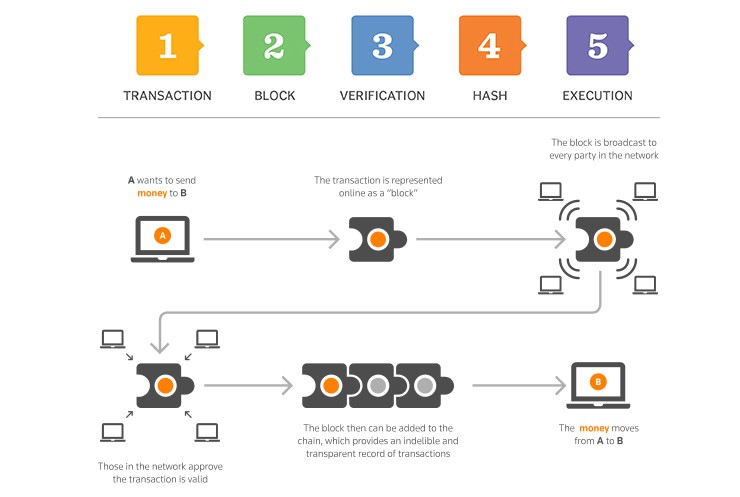
How Blockchain Works: Infographic by Gary Fox
NFTs can be bought, sold, and secured through many different blockchains, including Ethereum, Flow, and Tezos. Through these platforms, the unique identifier associated with an NFT is stored across a secure and distributed network, making its ownership and history secure, verifiable, and part of the public record.
This part is crucial. The GIF file above has no history. You can’t see where I downloaded it from or how many times it was sent around before then. But here we can see that the Nyan Cat NFT was minted by @NyanCat and is currently owned by @0x7eb2…3f6b—whoever that is.
This changes everything for the digital art market and the meaning of digital commodities. Through NFTs, businesses, artists, and investors can prove ownership, create scarcity, earn royalties, and sell their digital assets.
RELATED: How Major Retailers Are Using NFTs To Drive Sales & Boost Brand Loyalty
Can anything be an NFT?
The short answer is: kind of.
The world of NFTs is still in its infancy. And while digital art is the main form of NFT, the possibilities are near-limitless, and NFTs now include tweets, memes, music videos, invention patents, and virtual kittens. Yes, even kittens can be NFTs.
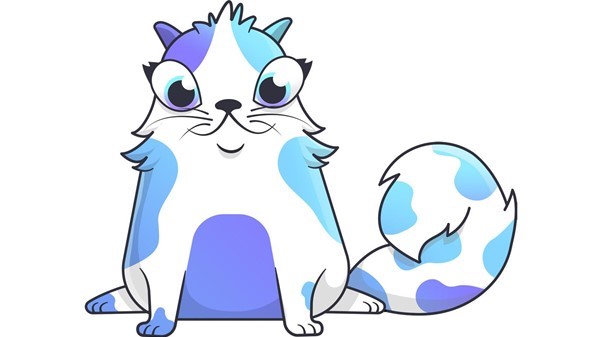
CryptoKitties were among the first play-to-earn NFTs, allowing users to breed and collect virtual kittens
Now, before you laugh at the idea of virtual kittens, note that an estimated $40 million USD worth of transactions have taken place on the CryptoKitties platform.
In 2017, the hype surrounding CryptoKitties was so large that there was a six-fold increase in the usual transactions of the cryptocurrency ETH. This increase dramatically slowed the Ethereum network and revealed what was an almost fatal flaw in what is today the second most highly valued cryptocurrency: limited scalability.
We’re probably yet to see the full extent of what can be made into an NFT, but there are a few major sectors that are fast embracing NFTs. Below we’ve compiled a few of our favorites, and the key areas in the NFT market we’re watching closely.
NFT Trends to Watch
- Music – Artists from Snoop Dogg to Kings of Leon are selling music and art as NFTs
- Virtual real estate – Decentraland offers plots of virtual land on which investors can build
- Gaming – Play-to-earn NFT gaming models have emerged, including digital horse racing
- Luxury NFTs – Luxury brands from Gucci to Jacob & Co have entered the NFT market
- Sports memorabilia – NBA Top Shot and DraftKings are cashing in on digital memorabilia
- NFTs as proof of real-world ownership – With counterfeit shoes flooding the sneaker market, Nike plans to create NFTs that represent proof-of-ownership over real-world shoes

RELATED: 11 Exciting NFT Trends Shaping the Future of Non-Fungible Tokens
NFT Market Landscape
NFTs sales reached $17.7 billion in 2021, a staggering 200X year-over-year rise. In January of 2022 alone, there were over 950,000 unique NFT buyers.
DappRadar’s 2022 Q1 report shows NFTs are reaching new heights in 2022, with a record-breaking January in which the trading volume of NFTs was over $16 billion.
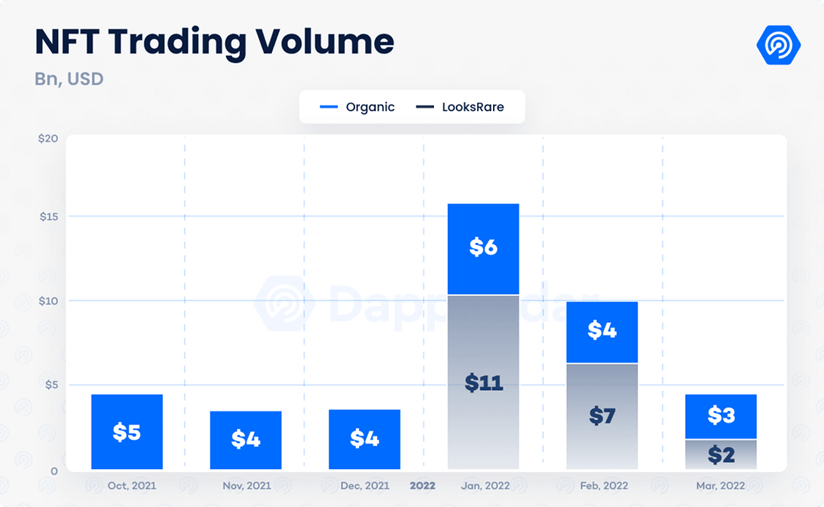
NFT-centric projects continue to see the most interest on marketplaces. But NFTs created by legacy brands such as Adidas, Disney, and the NBA are gaining an increasing share of the market and drawing new customers to the fast-growing industry.
- Adidas’ NFT sale gave them $22 million in revenue.
- NBA Top Shot generated over $700 million in total sales in less than a year.
- RTFKT, which was bought by Nike, sold over $3.1 million in virtual sneakers in just seven minutes.
- Disney sold over 50,000 Pixar Pal NFTs, making $3.3 million off the release.
Interest in NFTs, unique buyers of NFTs, and NFT sales all rose dramatically in 2021. And with the success of legacy brands in entering the NFT market, it's clear adoption of NFTs for businesses will only rise. Everyone from ticketing companies to fashion brands to media giants are hiring NFT experts, showing businesses across industries are looking to get in on the NFT action.
RELATED: How NFT Ticketing Can Help You Engage Fans, Build Hype & Boost Sales
How do I get involved in NFT sales?
For individual NFT creators, there are several marketplaces that provide minting services and peer-to-peer NFT sales. These include:
- OpenSea – The first and largest NFT marketplace
- Foundation – A curated NFT marketplace planning to build a new creative economy
- MakersPlace – An NFT marketplace for digital creators
- Rarible – A community-owned marketplace which uses its own currency
- WAX digital - An NFT marketplace that releases exclusive NFTs by global brands and prestigious artists
Some of the largest auction houses in the world have also taken to selling NFTs, with both Christie’s and Sotheby’s auctioning off high-value NFTs online.
Other NFT businesses have gone the route of selling NFTs through built-for-purpose marketplaces. Notable examples of this in the sports memorabilia space include DraftKings and NBA Top Shot, marketplaces selling tokens such as Tom Brady’s autograph and footage of Lebron James dunking.
Generate hype, deliver fairness & set your NFT project up for success with your free 8-step interactive NFT drop checklist

5 tips for a successful NFT release
With enormous amounts of interest in NFTs, and large swathes of people around the globe looking to get in on what could be the next big thing, it’s crucial online businesses are prepared for the launch of their NFTs, and the issues that can arise during high traffic events.
RELATED: 9 Steps for a Successful NFT Drop: Hype, Fairness & Fun
1. Choose your blockchain
Once you have an asset, whatever it may be, it needs to be minted onto a blockchain to be owned or sold as an NFT.
Minting is the process of making your digital asset into part of a blockchain.
The NFTs you create will live on the blockchain you mint them on to. They will most likely never be transferable to other blockchains, so it’s important to consider the pros and cons of the blockchain you choose before you mint your NFT onto it.
There are many blockchain options available, including:
While most NFTs exist on Ethereum, blockchains like Dapper Labs’ Flow are supporting massive new players in the NFT space like NBA Top Shot, and have partnered with everyone from Samsung to Dr. Seuss.
2. Create a communication strategy
Product launches are all about building excitement, especially when it comes to NFTs.
The NFT market is a speculative one, so the more excitement around your release, the more value customers are going to ascribe to your NFTs.
And the more valuable customers think your NFTs are, the more interest there will be in your product release.
Whether it’s an auction or a fixed price release, building excitement around your NFTs will inevitably increase their value. So it’s important to figure out your unique selling point and make sure customers understand why they need your NFTs.
All the most highly valued NFTs have a story or significance behind them. Beeple’s $69 million NFT was the first to be sold at a fine art auction house and included 5000 artworks created over 14 years. Jack Dorsey sold the first Tweet ever as an NFT for over $2 million. CryptoPunks are among the first NFTs and are symbolic of the NFT movement.
People are willing to pay millions for these NFTs because of the lore that surrounds them.
So why should people buy your NFTs?
To answer that question, you need to ask yourself:
- Why are my NFTs significant?
- How are they different from other NFTs?
- Why will people be trying to get their hands on them for years to come?
- What value do they give my customer?
- How exclusive are they?
Answer these questions for yourself, and then get the word out to potential customers.
3. Prepare your staff
Your staff play a crucial role in your product launches, both before and during events. Before a product drops, you need to ensure your team is fully prepared for whatever chaos may ensue.
Having a customer service team working the chat and phone lines is essential in presenting yourself as a professional and customer-oriented business.
During the launch, staff should be monitoring your website for bugs, checking on social media for signs of frustration, and doing everything they can to make sure customers are left satisfied with their experience and eager to come back for more.
4. Keep bots at bay
As with almost all products that have high resale value—sneakers, tickets, limited release items—NFT launches are prone to targeting by bots.
Bots can do all sorts of nasty things to your product releases, from taking NFTs out of real customers’ hands, to orchestrating brute force attacks which can bring down your site.
Allowing bots to snatch up your products not only frustrates your real customers, but risks ruining your product release by crashing your customers' point of access.
Investing in bot mitigation measures, and ensuring your website stays online, is a key line of defense during a product launch.
RELATED: Everything you need to know about preventing online shopping bots
5. Ensure your website is prepared for a high traffic event
As users flood websites, hyped NFT releases have crashed marketplaces from OpenSea to Christie’s to Makersplace.
All these crashes had one thing in common—the websites weren’t prepared for the traffic surges the NFT drops would lead to.
As businesses navigate the exciting space of NFTs, they are fast realizing the interest in NFTs too often exceeds the capacity of their websites. With customers expecting fair, orderly, and problem-free product releases, NFT businesses are seeking out new ways to control the traffic surges that come with NFT releases. And virtual waiting rooms are playing an important role in that process.
Marketplaces like NBA Top Shot and DraftKings have implemented virtual waiting rooms to manage their traffic and ensure their NFT rollouts proceed fairly and smoothly.
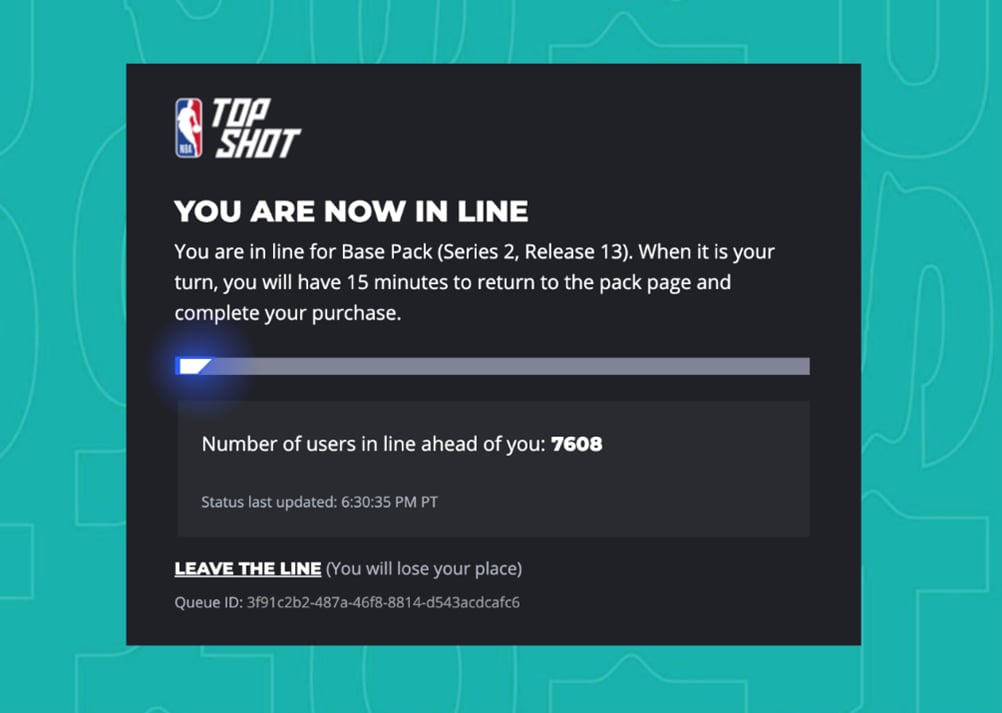
NBA Top Shot NFT Virtual Waiting Room
Prepare for anything
Over the past few years, we’ve seen a 24 x 24 pixel image sell for almost 12 million dollars, virtual kittens expose the limited scalability of the second most valuable cryptocurrency in the world, and brands from Gucci to the NBA get in on the world of NFTs.
The NFT market skyrocketed in 2021, and shows no signs of slowing down.
No one really knows what will happen next with NFTs, but it’s safe to say we should be prepared for anything.